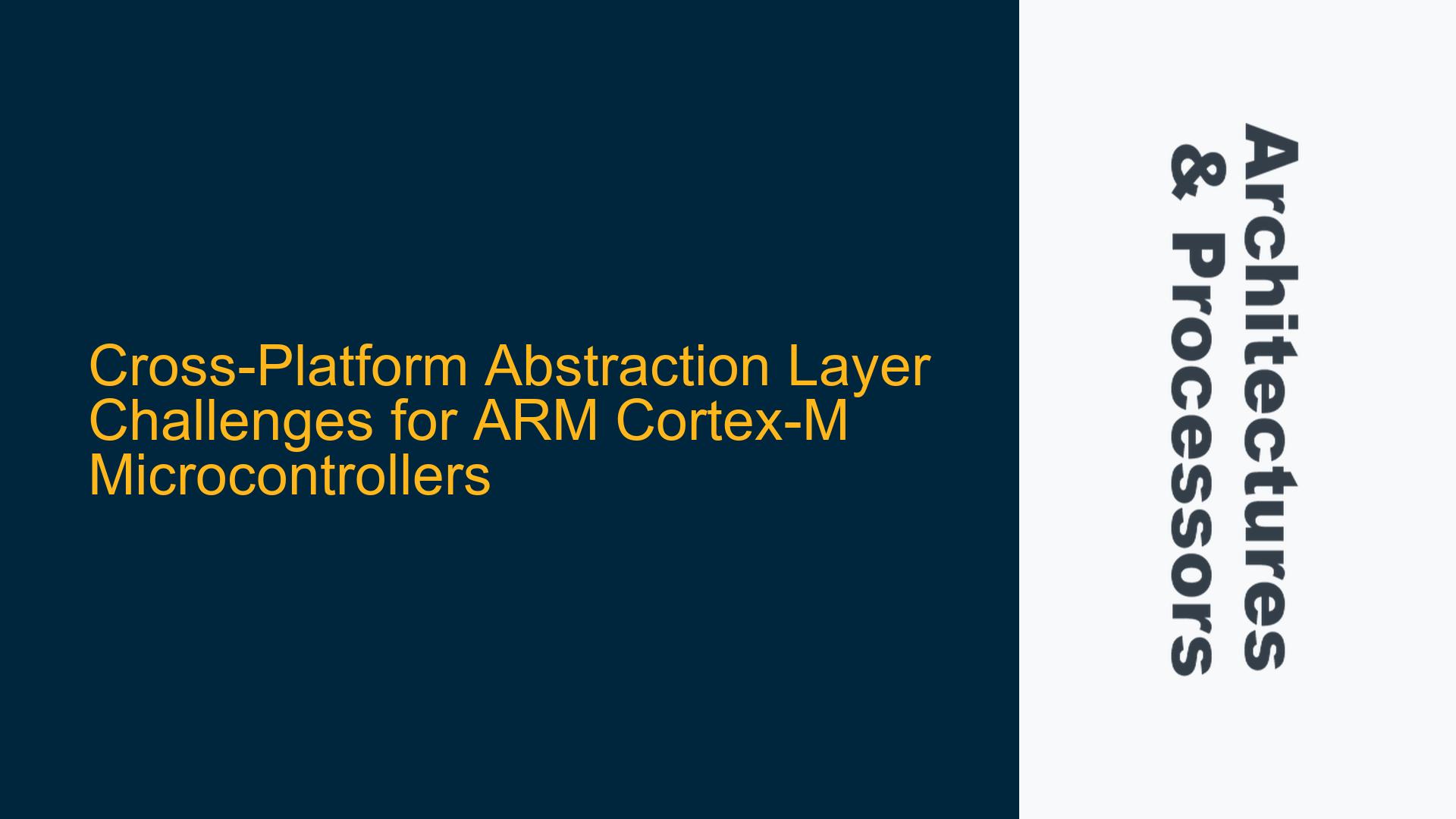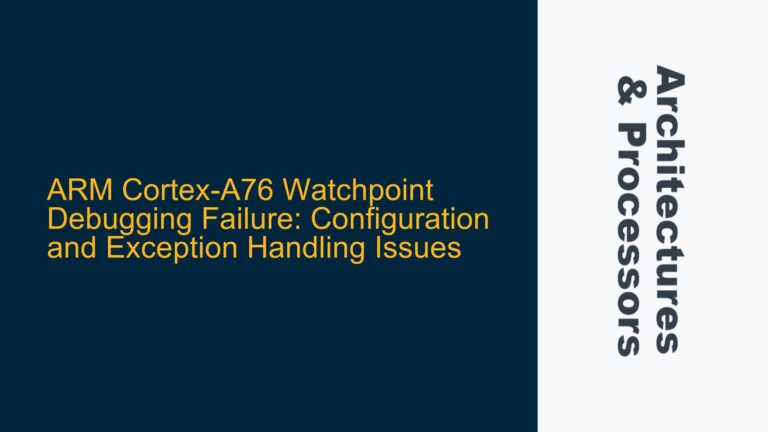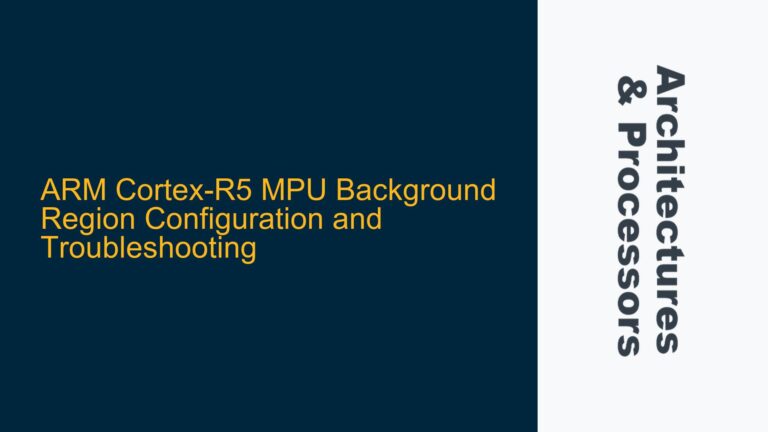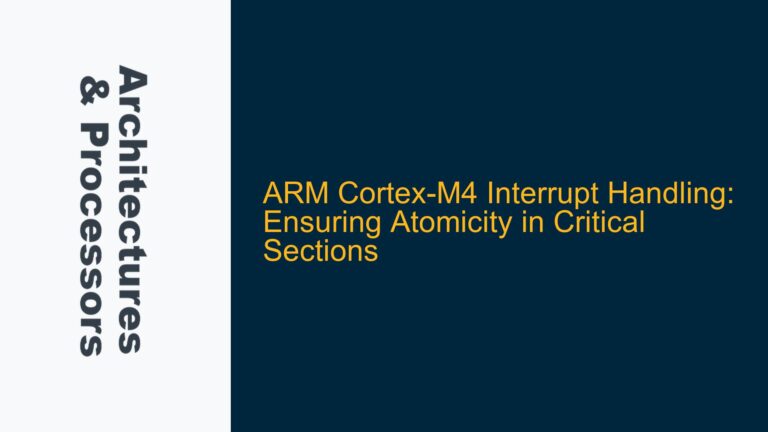Developing Middleware Firmware for Multi-Vendor ARM Cortex-M Devices
Developing middleware firmware that operates seamlessly across multiple ARM Cortex-M microcontrollers from different vendors, such as STMicroelectronics (STM32), NXP (LPC), and Cypress (PSoC), presents a unique set of challenges. The primary goal is to create a codebase that abstracts hardware differences while maintaining compatibility with peripherals like SPI, UART, Ethernet, and USB. This requires a deep understanding of the hardware abstraction layer (HAL) design principles, vendor-specific implementations, and the limitations of existing abstraction frameworks like CMSIS-Driver and libopencm3.
The core issue revolves around balancing abstraction and specificity. Over-abstracting can lead to bloated code and performance inefficiencies, while under-abstracting can result in vendor lock-in and reduced portability. Additionally, the lack of consistent support for newer microcontroller families, such as the NXP LPC5500 series or Cypress PSoC, in existing HAL frameworks complicates the development process. This forces developers to either rely on vendor-specific libraries or invest significant effort in creating custom abstraction layers.
The discussion highlights several critical questions: the feasibility of expecting future support for underrepresented microcontrollers, the stability and quality of existing HAL implementations, and the practicality of achieving cross-platform USB support. These questions underscore the need for a systematic approach to middleware development that accounts for the variability in vendor implementations and the evolving landscape of ARM Cortex-M microcontrollers.
Limitations of CMSIS-Driver and Vendor-Specific HALs
The CMSIS-Driver framework, while promising, has notable limitations that hinder its adoption for multi-vendor projects. One major issue is the lack of consistent updates and support for newer microcontroller families. For instance, the STM32F0 series has not seen updates in over two years, and there is no support for Cypress PSoC microcontrollers. This stagnation raises concerns about the long-term viability of CMSIS-Driver as a universal abstraction layer.
Vendor-specific HALs, such as those provided by STMicroelectronics and NXP, often suffer from feature bloat and inconsistent quality. While these HALs are tailored to the specific peripherals and features of their respective microcontrollers, they are not designed with cross-platform compatibility in mind. This results in a fragmented ecosystem where developers must either adapt to the quirks of each vendor’s HAL or invest in creating a custom abstraction layer.
The lack of comprehensive support for advanced peripherals like USB and Ethernet further complicates the development process. USB, in particular, is highly vendor-specific, with each manufacturer providing their own libraries and drivers. This makes it challenging to achieve true cross-platform compatibility without significant customization. Ethernet support is similarly fragmented, with varying levels of integration and performance across different microcontroller families.
Strategies for Implementing a Minimalistic Abstraction Layer
To address these challenges, developers should adopt a phased approach to middleware development, starting with a minimalistic abstraction layer that focuses on core peripherals like SPI and UART. This approach allows for incremental development and testing, ensuring that the abstraction layer remains robust and adaptable to future requirements.
The first step is to define a set of core abstraction functions that encapsulate the essential operations for each peripheral. For example, an SPI abstraction layer might include functions for initialization, data transmission, and reception. These functions should be designed to be as generic as possible, while still allowing for vendor-specific optimizations where necessary.
Next, developers should create a set of test cases to validate the abstraction layer across different microcontroller families. These tests should cover both functional correctness and performance, ensuring that the abstraction layer does not introduce significant overhead or inefficiencies. Automated testing frameworks can be particularly useful in this context, allowing for continuous integration and regression testing as the abstraction layer evolves.
For advanced peripherals like USB and Ethernet, developers should consider leveraging vendor-specific libraries while maintaining a thin abstraction layer to isolate platform-specific code. This approach allows for the reuse of existing libraries while still providing a consistent interface for higher-level application code. For example, a USB abstraction layer might include functions for device enumeration, data transfer, and configuration, with platform-specific implementations for each supported microcontroller family.
Finally, developers should document the abstraction layer thoroughly, including guidelines for adding support for new microcontrollers and peripherals. This documentation should include examples, best practices, and troubleshooting tips to assist other developers in using and extending the abstraction layer.
By following these strategies, developers can create a robust and flexible middleware firmware that supports a wide range of ARM Cortex-M microcontrollers while minimizing the overhead and complexity associated with cross-platform development. This approach not only reduces the risk of vendor lock-in but also ensures that the middleware remains adaptable to future advancements in microcontroller technology.






